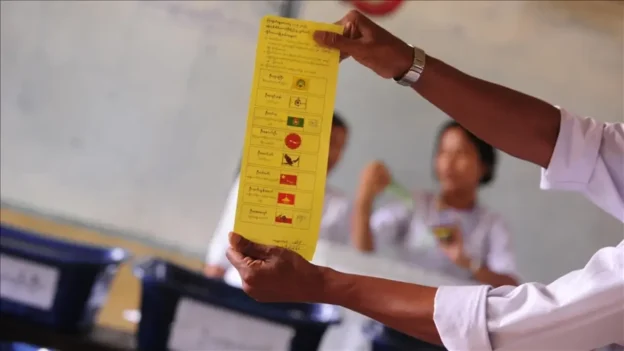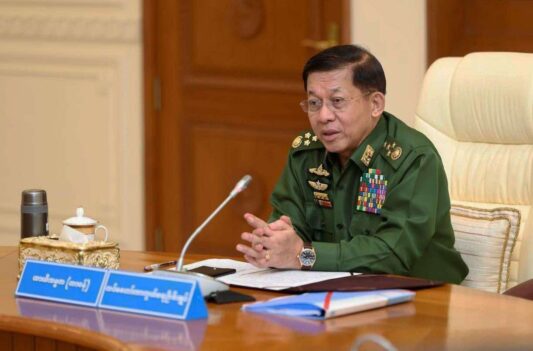The upcoming 6th BIMSTEC (Bay of Bengal Initiative for Multi-Sectoral Technical and Economic Cooperation) Summit in Bangkok on April 4, 2025, takes place amid a complex regional landscape, particularly in the wake of remarks made by Mohammad Yunus, advisor to Bangladesh’s interim government. Yunus’s assertion that India’s northeastern states are “landlocked” and that Bangladesh alone offers viable access for Chinese investment due to its maritime advantage has stirred significant geopolitical discussions. This summit, themed “Prosperous, Resilient, and Open BIMSTEC,” presents a crucial opportunity to assess the region’s future trajectory and determine whether Yunus will seek to make amends for his remarks, which have caused unease in New Delhi.
Yunus’s comments, made during a visit to China, positioned Bangladesh as the “guardian” of oceanic access, implying that India’s Northeast lacks meaningful connectivity. His rhetoric directly contradicts India’s sustained efforts to develop the region, a key focus of Prime Minister Narendra Modi’s administration under the “AshtaLaxmi” vision, which seeks to unlock the Northeast’s economic potential. New Delhi has undertaken significant projects such as the Asian Highway, the Kaladan Multi-Modal Transit Transport Project, and recent semiconductor investments in Assam. Events like Advantage Assam 2.0, which secured substantial investment commitments, further highlight India’s commitment to integrating the Northeast into the broader regional economy.
Yunus’s remarks have therefore created an awkward situation, particularly as he is set to meet Prime Minister Modi on the sidelines of the BIMSTEC Summit. Reports indicate that the two leaders will have an informal interaction on April 3, followed by an official meeting on April 4—their first since Bangladesh’s interim government took charge after Sheikh Hasina’s ouster in July 2024. While Modi has refrained from naming specific leaders he plans to meet at the summit, his engagements will undoubtedly reflect India’s strategic priorities. Yunus, on the other hand, faces the challenge of walking back his China-centric rhetoric and reassuring India of Bangladesh’s continued commitment to regional cooperation through BIMSTEC.
However, insiders suggest that New Delhi remains displeased with Yunus’s overtures to Beijing and may take its time before making any substantial policy decisions. This raises the question: can Yunus use BIMSTEC as a platform to rebalance relations with India, or has he already tipped Bangladesh too far into China’s orbit?
Bangladesh’s strategic importance and China’s growing influence
Bangladesh has made remarkable economic progress over the past two decades, reducing poverty from 11.8% in 2010 to 5.0% in 2022 (based on the $2.15/day poverty line). This growth is largely driven by its demographic dividend, robust garment exports, and remittance inflows. However, despite these gains, Bangladesh remains reliant on international financial assistance and foreign investments for sustained development.
China has been a dominant player in Bangladesh’s economic landscape, significantly expanding its footprint through trade, infrastructure projects, and strategic partnerships. Bilateral trade between the two countries surged from $652 million in 1995 to $24.1 billion in 2021, while Chinese Foreign Direct Investment (FDI) in Bangladesh increased 10.9-fold between 2011 and 2019. Investments span crucial sectors such as energy (both green and coal-based), infrastructure (seaports, railways), information technology, defence, and education.
The 2023 reinforcement of the China-Bangladesh Strategic Partnership of Cooperation, marked by direct engagements between President Xi Jinping and former Prime Minister Sheikh Hasina, solidified this relationship. Chinese investments nearing $1.4 billion now support over 700 Chinese companies, generating approximately 550,000 jobs. With its strategic location, access to the Bay of Bengal, and abundant low-cost labour, Bangladesh has positioned itself as a critical partner in Beijing’s broader regional ambitions.
From China’s perspective, its interests in Bangladesh extend beyond economic investments. Dhaka serves as a crucial node in China’s broader “String of Pearls” strategy, which seeks to secure vital maritime trade routes and counterbalance Indian influence in South Asia. Initiatives like the Bangladesh-China-India-Myanmar (BCIM) Economic Corridor and the 21st Century Maritime Silk Road, particularly with access to the Chittagong port, underline China’s long-term strategic vision.
The evolution of China-Bangladesh ties from historical hostility to a strategic partnership has been gradual but deliberate, marked by deepening defence and economic cooperation. However, this growing Chinese presence in Bangladesh remains a sensitive issue for India, which views Dhaka as a key partner in ensuring regional stability and countering external influences in South Asia.
BIMSTEC’s role and India’s strategic considerations
The 6th BIMSTEC Summit marks a pivotal moment for regional diplomacy. As a seven-member bloc—Bangladesh, Bhutan, India, Myanmar, Nepal, Sri Lanka, and Thailand—BIMSTEC is emerging as a pragmatic alternative to SAARC, focusing on economic integration, trade, connectivity, and security cooperation.
Key agenda items include adopting the Bangkok Vision 2030, signing the Agreement on Maritime Transport Cooperation, and finalising MoUs with the Indian Ocean Rim Association (IORA) and the United Nations Office on Drugs and Crime (UNODC). The summit will also formalise the Rules of Procedure for BIMSTEC Mechanisms and review the Eminent Persons Group Report on BIMSTEC’s Future Direction.
BIMSTEC’s priorities span Agriculture and Food Security, Connectivity, Environment and Climate Change, People-to-People Contact, Science, Technology, and Innovation, Security Cooperation, Trade, Investment, and Development, and Blue Economy and Disaster Management. These areas underscore BIMSTEC’s commitment to fostering regional growth, stability, and collaboration across the Bay of Bengal.
With Yunus now at the helm of Bangladesh’s interim government, BIMSTEC represents an opportunity for Dhaka to reaffirm its commitment to regional cooperation without alienating India. While Bangladesh remains economically engaged with China, the BIMSTEC framework—driven largely by India—offers a counterweight to China’s growing footprint in South Asia. The key question now is whether Yunus will leverage this platform to mend ties with India or risk further diplomatic tensions by maintaining his China-centric stance.
India’s calculations and the path ahead
Prime Minister Narendra Modi’s participation in the summit will be instrumental in shaping the future of regional cooperation. India has long viewed BIMSTEC as a critical vehicle for promoting economic integration and security collaboration in the Bay of Bengal region. However, Yunus’s recent statements in China have introduced a new layer of complexity to the India-Bangladesh relationship.
Sources suggest that New Delhi will closely observe Yunus’s messaging at the summit, particularly regarding Bangladesh’s position on regional connectivity, infrastructure, and trade. If Yunus signals a course correction—acknowledging the Northeast’s potential and reaffirming Bangladesh’s role as a cooperative regional partner—it may pave the way for a more constructive engagement between the two nations. However, if Yunus maintains his stance, India may adopt a more cautious approach, reassessing its diplomatic and economic engagements with Dhaka.
Given China’s growing influence in Bangladesh, India will likely reinforce its own connectivity projects, such as the Kaladan Multi-Modal Transit Transport Project and the India-Bangladesh Friendship Pipeline, to counterbalance Beijing’s expanding footprint. The summit will thus serve as a crucial test for Yunus—whether he seeks to mend ties with India or continues to deepen Bangladesh’s strategic alignment with China.







